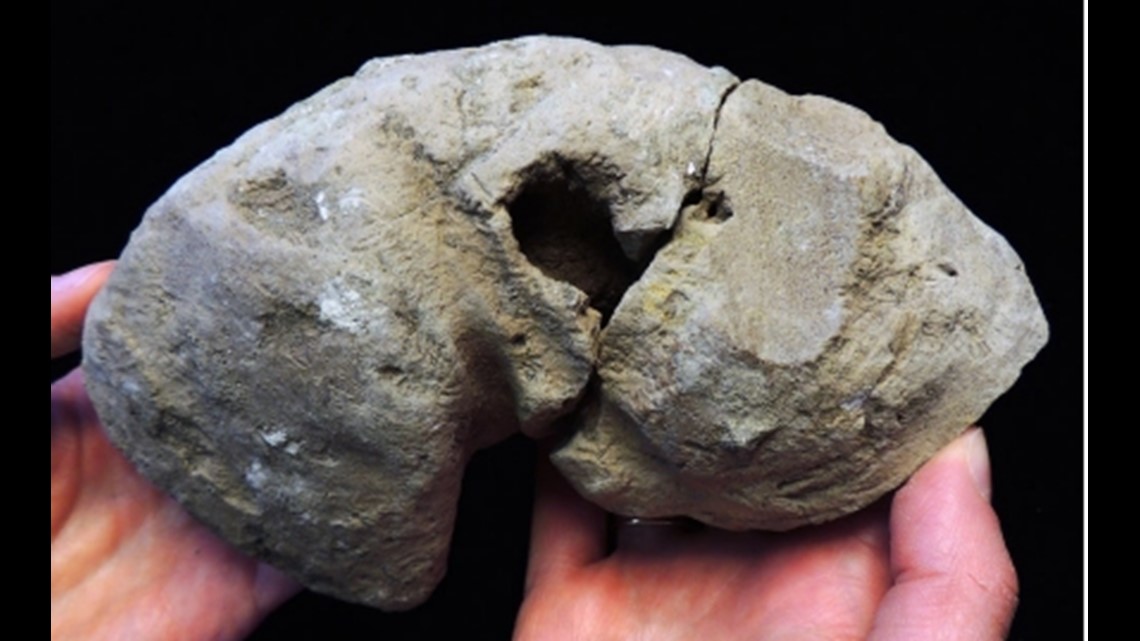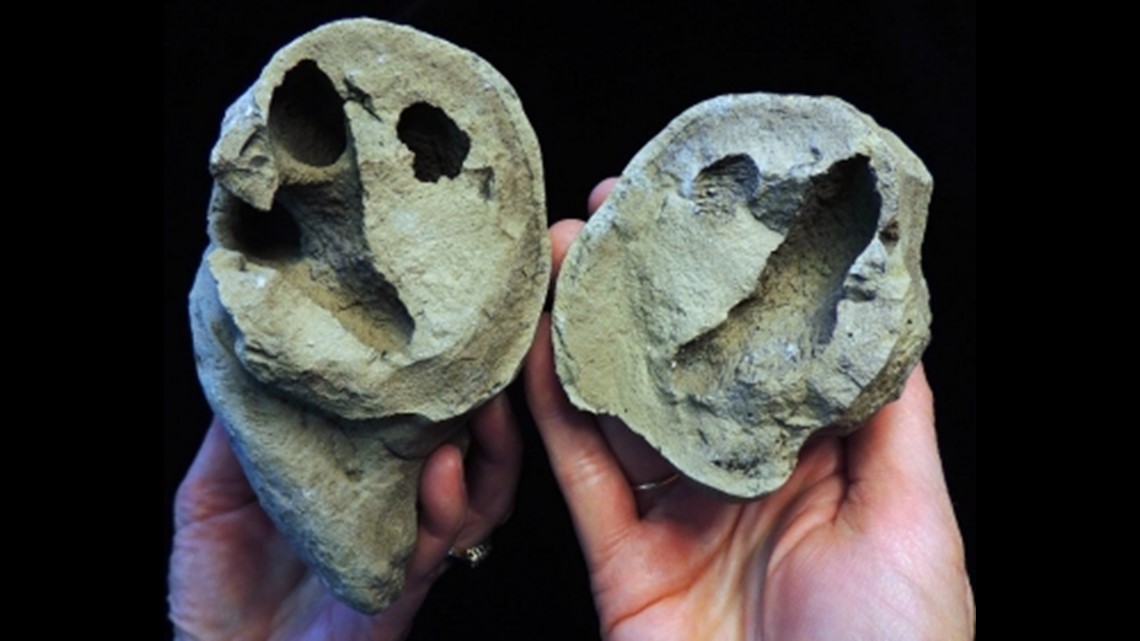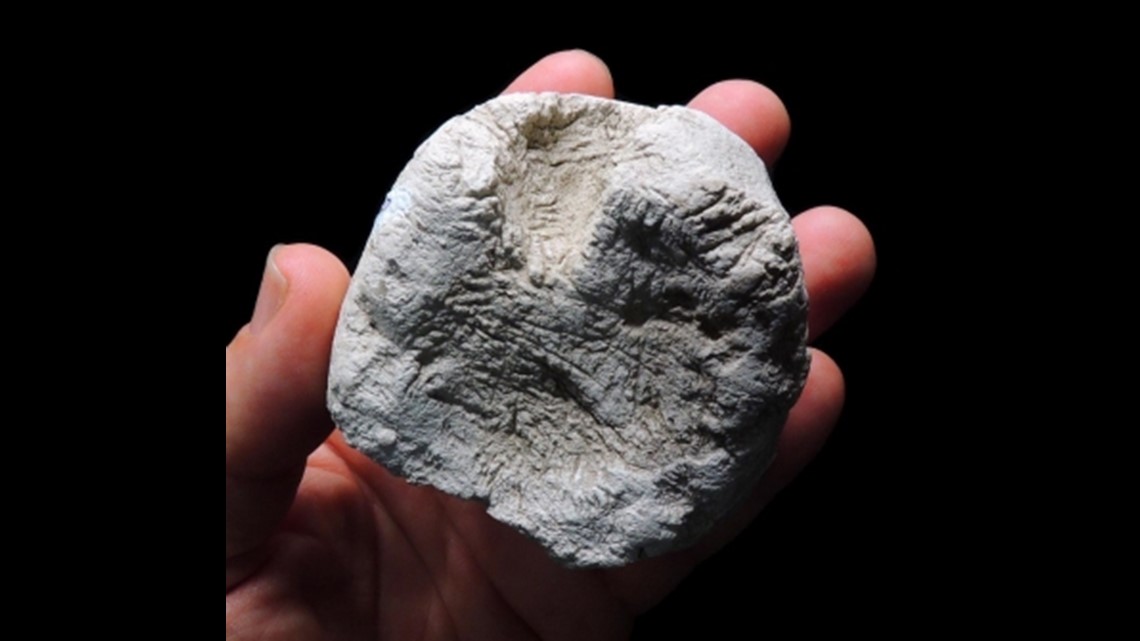MARYLAND, USA — Scientists have discovered an extremely rare fossil on the Calvert Cliffs on the western shore of the Chesapeake Bay, Maryland. The fossil found is called a trace fossil, which shows the activity of a once-living organism. This could be something like footprints or nests.
What makes this particular finding so special, according to paleontologist Dr. Stephen J. Godfrey with the Calvert Marine Museum and Dr. Alberto Collareta, is this is a fossil inside of another fossil. The discovery is so unique that it was given its own name, Transexcrementum cuniculus.


Let's break those words down. ‘Trans’ is Latin for through, ‘excrementum’ is Latin for excrement, and cuniculus means ‘to burrow’. In simpler terms, it’s a poop fossil with a tunnel in it.
Scientists have evidence that a living organism burrowed into the feces of a crocodile-like creature, and the tunnel that was made in the poop has been fossilized. The dung is a fossil since it came from a crocodile and the tunnel is a fossil since it shows the activity of another organism. These remnants could have come from the Early Cretaceous period, which was 145 million to 100.5 million years ago.


They don’t know what kind of organism created this poop tunnel, but they do believe whatever made it was coprophagic or it ate feces. Though there are a number of questions still to be answered about what created this rare fossil, its discovery sheds light on creatures that lived millions of years ago.



